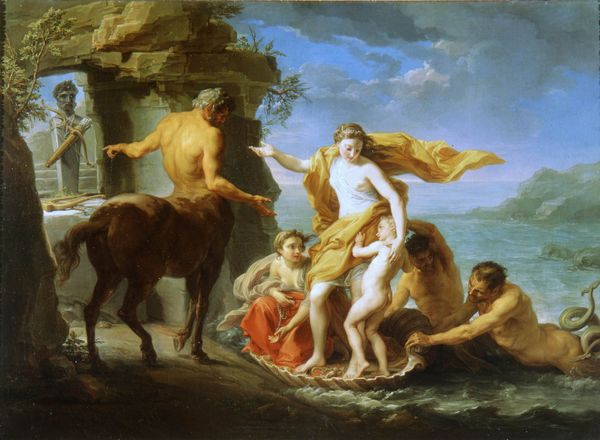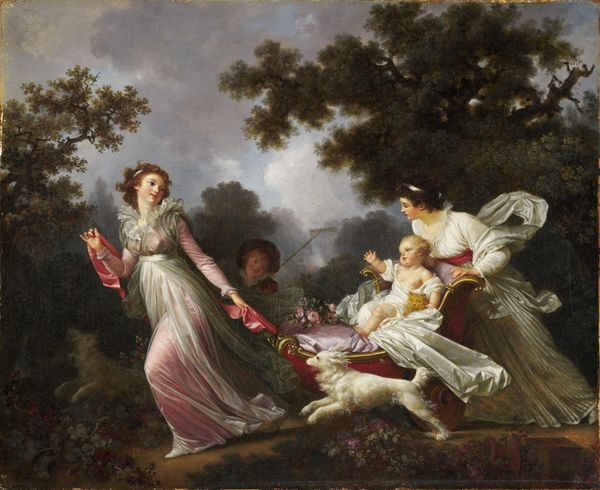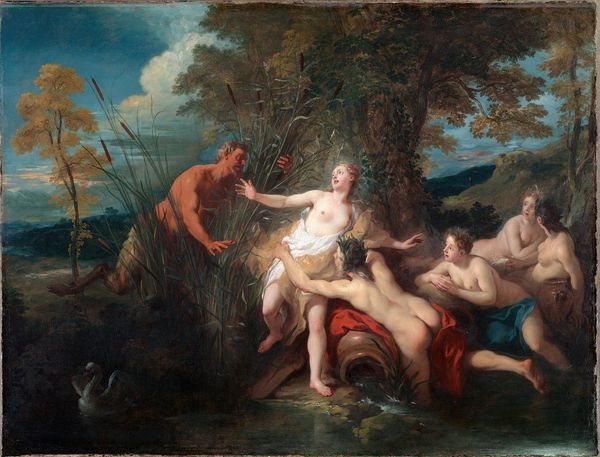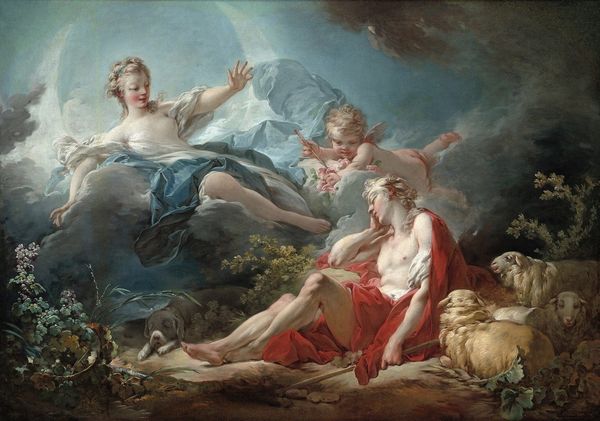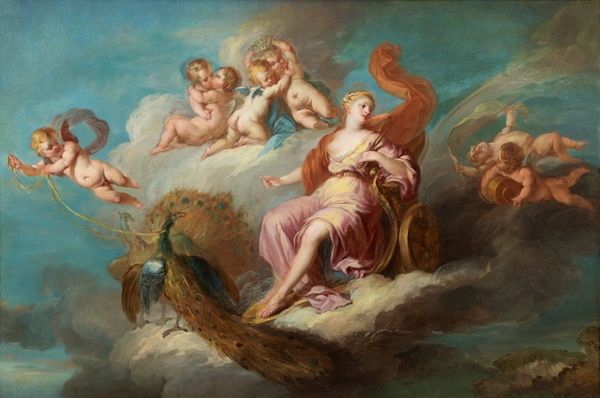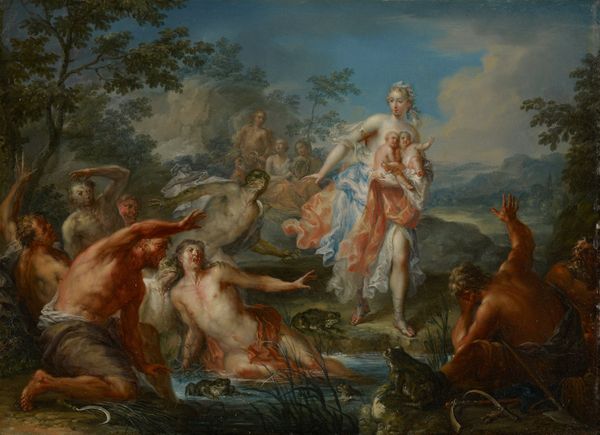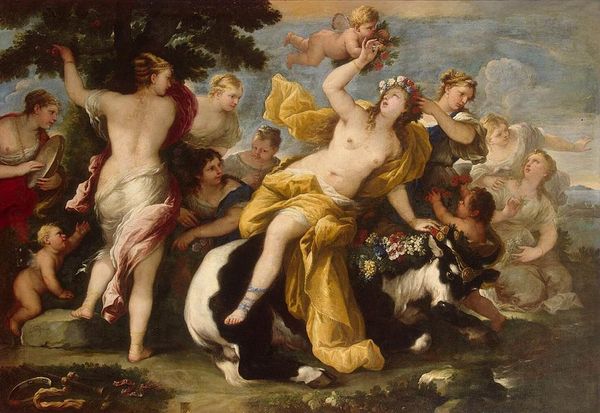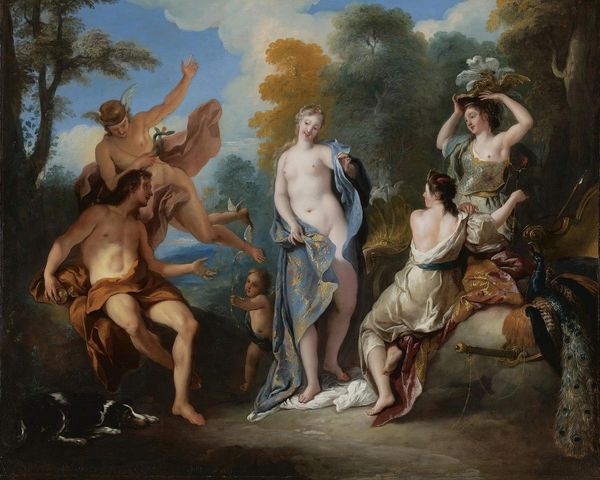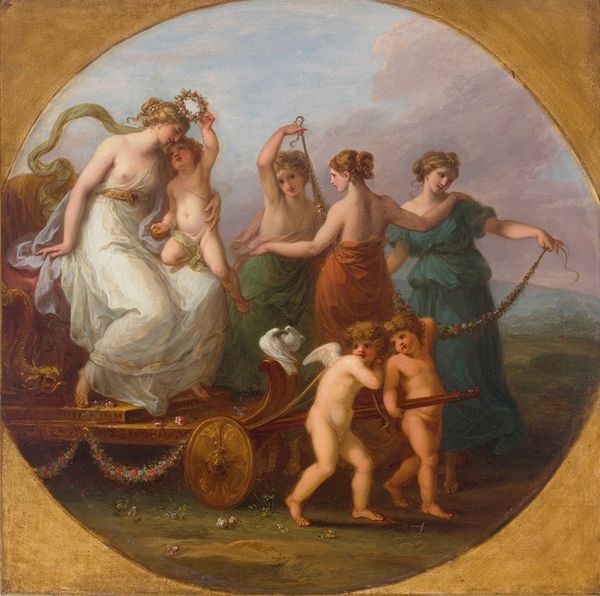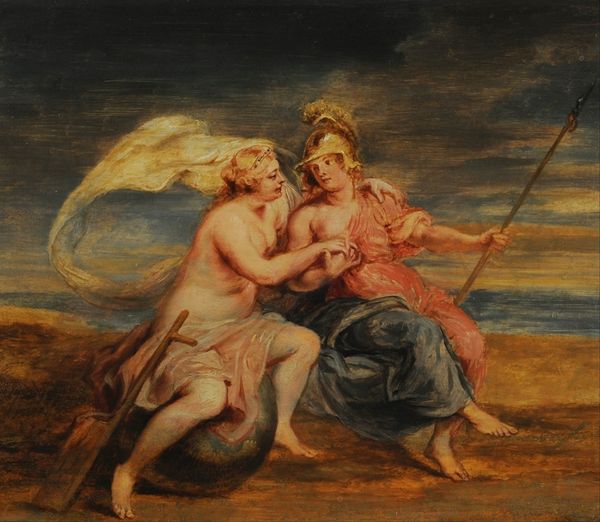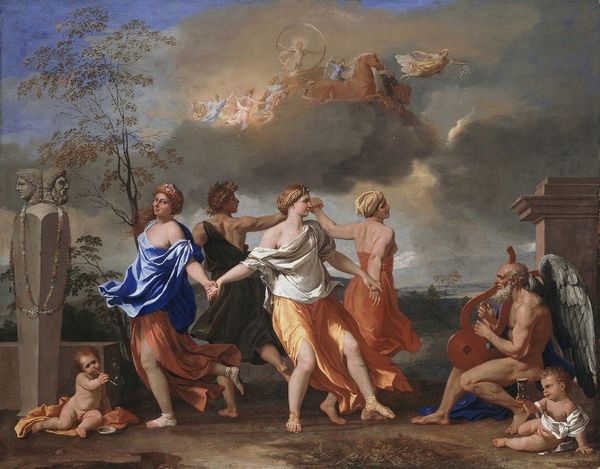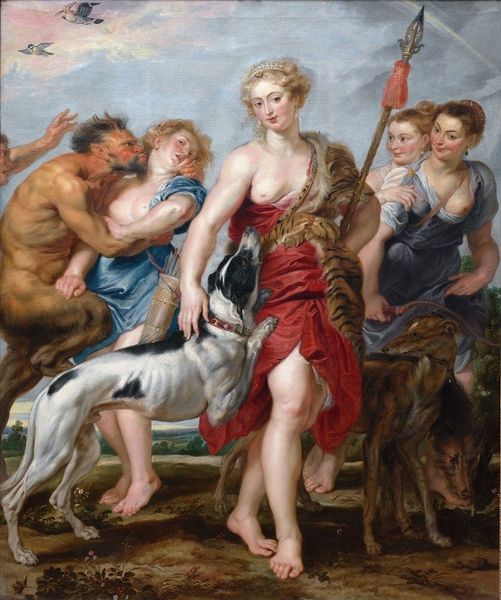
painting, oil-paint
#
allegory
#
painting
#
oil-paint
#
landscape
#
figuration
#
oil painting
#
mythology
#
history-painting
#
nude
#
rococo
Copyright: Public Domain: Artvee
Jean-François de Troy painted The Abduction of Europa with oil on canvas, a common medium for European painters of his time. The smooth, almost porcelain finish of the figures is a testament to the artist’s skill in manipulating oil paint to create a variety of textures and effects, from the diaphanous drapery to the soft flesh tones. The making of oil paint involved grinding dry pigments into linseed oil, a labor-intensive process often undertaken by apprentices in the workshop. De Troy, as a member of the French Royal Academy, would have been well-versed in the techniques and materials of painting, adhering to established methods passed down through generations of artists. The painting's subject matter, drawn from classical mythology, reflects the cultural values and intellectual pursuits of the aristocratic society in which de Troy operated. The consumption of art like this was directly tied to the patronage system, with artists relying on commissions from wealthy individuals and institutions. By understanding the materials, techniques, and social context in which The Abduction of Europa was created, we gain insight into the world of 18th-century French art and the cultural values it reflects.
Comments
No comments
Be the first to comment and join the conversation on the ultimate creative platform.
